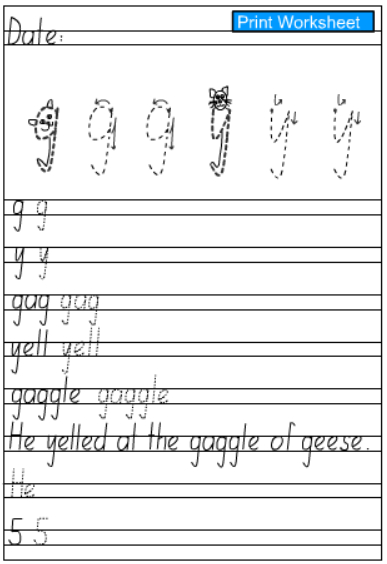Letters g and y -Handwriting Practice Sheet (Letters g and y)
- Grade: Grade 2
Activity type: Printable
To save results or sets tasks for your students you need to be logged in. Join Now, Free
Letters g and y -Handwriting Practice Sheet (Letters g and y)
- Course
English - Grade
Grade 2 - Section
Handwriting Worksheets - Outcome
Grade 2 - Activity Type
Printable - Activity ID
4732

